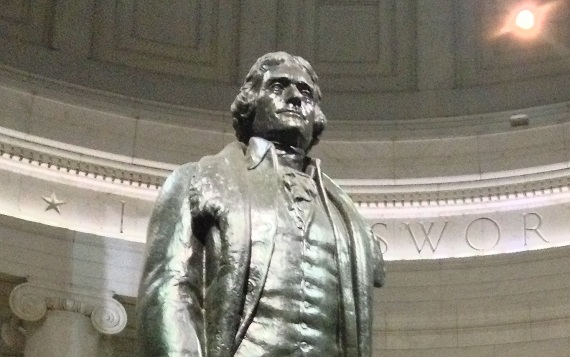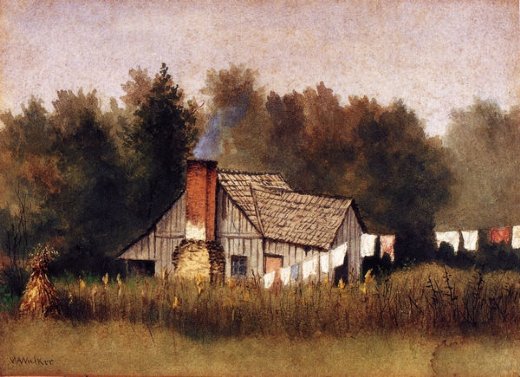Over the last several years the American public has been conditioned, like Pavlov’s dog, to think of white supremacy and slavery anytime they hear or see things that are connected to the Confederacy or the South. These conditioned people believe these lies because they are told to and usually without ever doing any research of there own, as I have personally encountered at my job and elsewhere. At the same time these are the people that are calling for diversity and justice in American society. One of the things that is often ignored about the Confederacy is how diverse it was. In the ranks you had not only white folks, but you had African-Americans, Jews, Irish, Hispanic, French, Asian’s, etc. I am focused on talking about the last group of people because they truly do get overlooked. When I first found out about Asian Confederates it really did shock me, especially with what I had been taught in school. But they did serve and there is plenty of evidence for it.
Robert Watson, who served in both the Confederate Navy and Army,[1] in his diary for February 23, 1862 had this to say about the unit he was stationed with which was the Florida Volunteer Coast Guard under Captain Henry Mulrenan,
“…Truly this is a cosmopolitan company, it is composed of Yankees, Crackers, Conchs, Englishmen, Spaniards, Germans, Frenchmen, Italians, Poles, Irishmen, Swedes, Chinese, Portuguese, Brazilian…but all are good southern men. There are also Scotchmen, Welshmen and some half Indians, surely this is the greatest mixture for a small company that I have ever heard of.”[2]
Then in volume Thirty-One of the Southern Historical Society Papers on page 103 you have General John McGrath state,
“…At the time of my appointment I was a member of the Delta Rifles, of the 4th Louisiana Infantry, a company composed very largely of young sugar planters and slave-owners of parishes contiguous to Baton Rouge. Wealthy, refined, gentlemanly fellows they were, those Delta Rifles, my dear reader, and you may imagine my dismay as I stepped ashore at the wharf at Mandeville, and cast my eyes upon as cosmopolitan a body of soldiers as there existed upon the face of God’s earth. There were Frenchmen, Spaniards, Mexicans, Dagoes, Germans, Chinese, Irishmen, and, in fact, persons of clime known to geographers or travellers of that day.”[3]
When one thinks of P.T. Barnum one does not usually associate the Confederacy with him. But Barnum’s famous side-show act of Chang and Eng Bunker, better known as the Siamese Twins, supported the Confederacy when the War broke out and so did their sons Christopher, Chang’s son, and Stephen, Eng’s son. In the 1840’s the twins purchased land in North Carolina and made a home. Christopher in 1863 joined the 37th Virginia Cavalry, Co. I. In the summer of 1864 he was wounded and captured outside of Moorefield, West Virginia. He was taken to Camp Chase, Ohio and then exchanged in March 1865.[4] In 1984 you have a nomination form to put there homestead in North Carolina, Haystack Farm, on the National Register of Historic places and it mentions Christopher’s Confederate service.[5] Christopher also wrote letters home during his time in the service.[6] His cousin Stephen also served in the same outfit but did not enlist until July of 1864. He was wounded in September of 1864 at Winchester, Virginia and wounded a second time later on during the War. [7]
Then you have Charles Chon who enlisted in Co. K, 24th Texas Cavalry. He was born in Shanghai about 1842 because his enlistment papers state that he enlisted on February 1, 1862 at the age of 20. We do not know how or when he got to America, but we do know that he settled in Yorktown, Texas where he enlisted.[8] He was captured at Arkansas Post, Arkansas on January 11, 1863 and was sent to Camp Butler in Springfield, Illinois. He may have only been there for a few months, because Camp Butler officially closed on May 19, 1863,[9] and his Muster Roll shows him being present for May and June 1863. It then shows that for July and August 1863 that he is absent due to sickness, and it may have been from an illness that he caught while in prison. Lonnie R. Speer states that, “Pneumonia was the primary killer at Camp Butler, but other ailments flourished. Erysipelas, remittent fevers, and chronic diarrhea were prevalent, and in March 1863, smallpox briefly broke out…”[10] So it is possible that he may have been suffering from one of these. It seems that he did recover enough to be able to rejoin his outfit and participate in the Battle of Franklin, TN over a year later on November 30, 1864. It is in this battle where he fell in service to the Confederacy at the age of 22 and now rests at the McGavock Cemetery. Fast forward one-hundred and forty years to 2005 and you have his great-great-nephew Martin Chang, from Los Angeles, CA, stumble upon him. In a 2007 Williamson Herald article it states,
“The discovery gave Martin Chang a new purpose, and an understanding of the direction he been led. He now wanted to know and understand his ancestor…To do so, he needed to do some walking in Charles Chon’s shoes, so he joined the Sons of Confederate Veterans, became a Confederate reenactor and a detective unraveling the story of his mysterious uncle who was a stone mason in Guangdong Province but landed in Shanghai where he disappeared…The disappearance was around the time of the Taiping rebellion…The next place he showed up was South Texas.”[11]
In New Orleans, LA there was a woman by the name of Shaie Mei Temple, who emigrated from Taiwan. She did a lot of research on Asian culture in Louisiana before her death in 2002. One of her accomplishments was going through Civil War Muster Rolls and seeing how many Asians served and she made sure that they were of Asian descent. She had come across about eighteen Asian Confederates.[12]
The racial diversity of the Confederate ranks is truly impressive. It is not the cut and dry righteous white and black Northerners fighting against the evil white Southerners, as we are taught in our school textbooks. Both sides were racially diverse. For example, you had over one-hundred Hawaiians serve in the Union ranks.[13] When I have talked to people about this they tend to get a really confused and puzzled look on their face. They have a hard time understanding why they would serve a government dedicated to white supremacy and slavery, which is what is being forced down people’s throats everywhere you look nowadays. It is very important for us to help keep the memory of these Asian Confederates alive because they fought, bled, and died for the sake of the Confederacy. If we do not help keep their memory alive, who will?
[1] https://www.fold3.com/page/635962849/robert-watson.
[2] https://www.floridamemory.com/items/show/341184?id=27.
[3] https://babel.hathitrust.org/cgi/pt?id=coo.31924092916729&view=1up&seq=11.
[4] https://www.mccunn.com/Civil-War.pdf. https://www.fold3.com/image/7823491?terms=christopher,war,confederate,bunker,civil.
[5] https://files.nc.gov/ncdcr/nr/SR0017.pdf.
[6] https://archive.org/details/unc_chapel_hill_christopher_wrenn_bunker_papers/page/n5/mode/2up.
[7] https://www.fold3.com/image/7823540?terms=war,confederate,bunker,civil,virginia. https://www.findagrave.com/memorial/53720120/stephen-decatur-bunker.
[8] https://www.fold3.com/image/14192063?terms=war,confederate,chon,civil,charles.
[9] Lonnie R. Speer, “Portals to Hell: Military Prisons of the Civil War,” (Mechanicsburg, PA: Stackpole Books, 1997), p. 137.
[10] Ibid.
[11] http://www.williamsonherald.com/news/californian-finds-chinese-relative-buried-in-carnton-s-confederate-cemetery/article_b84082cf-716d-5109-99a5-b9e79317498b.html.
[12] https://sites.google.com/site/accsacw/Home/sm-temple.
[13] https://www.nps.gov/civilwar/upload/More-Info-on-Hawaiians-in-the-Civil-War-Alphabetically-by-Name.pdf. https://www.hawaiinewsnow.com/story/23490890/hawaii-and-the-civil-war/.





